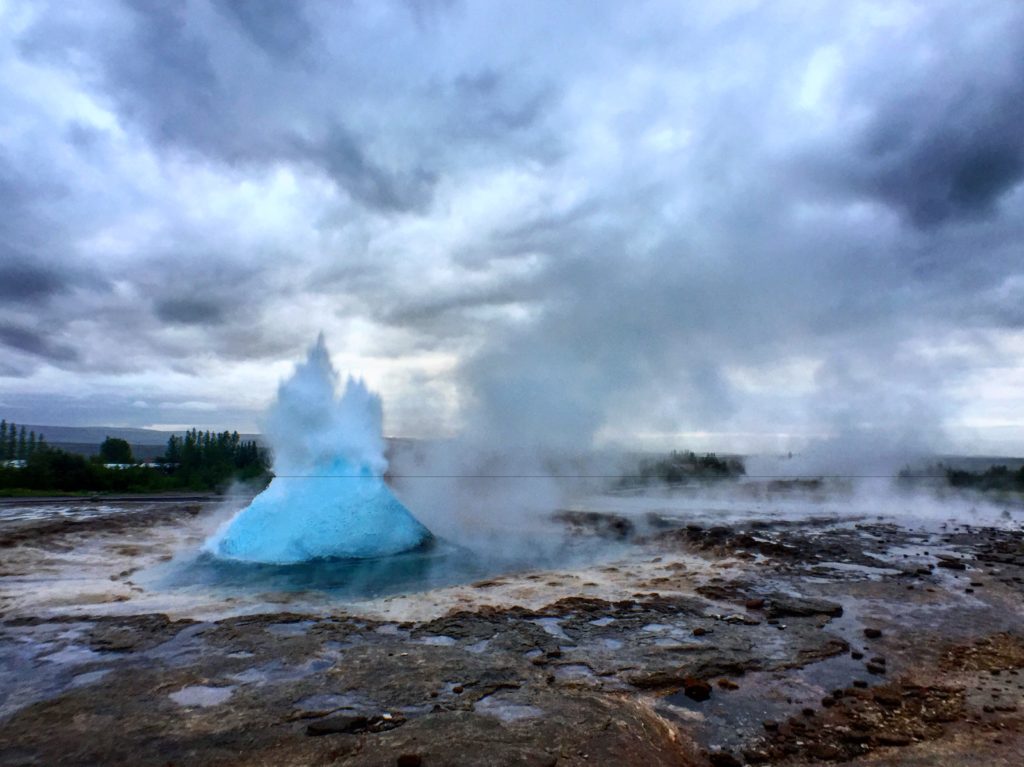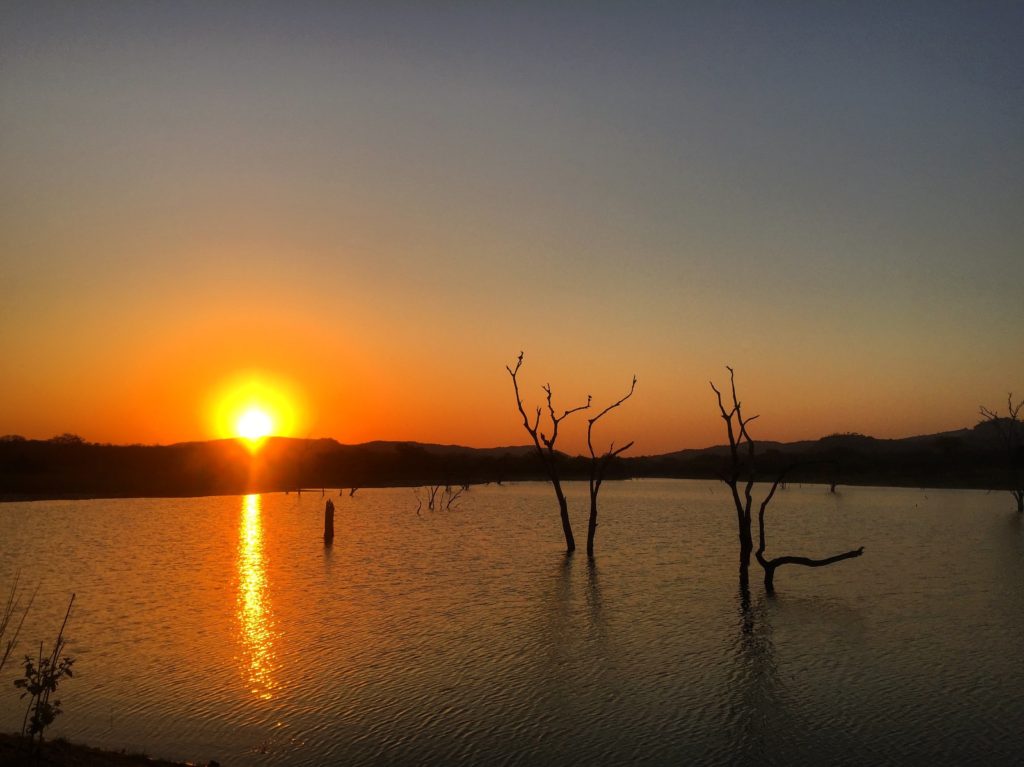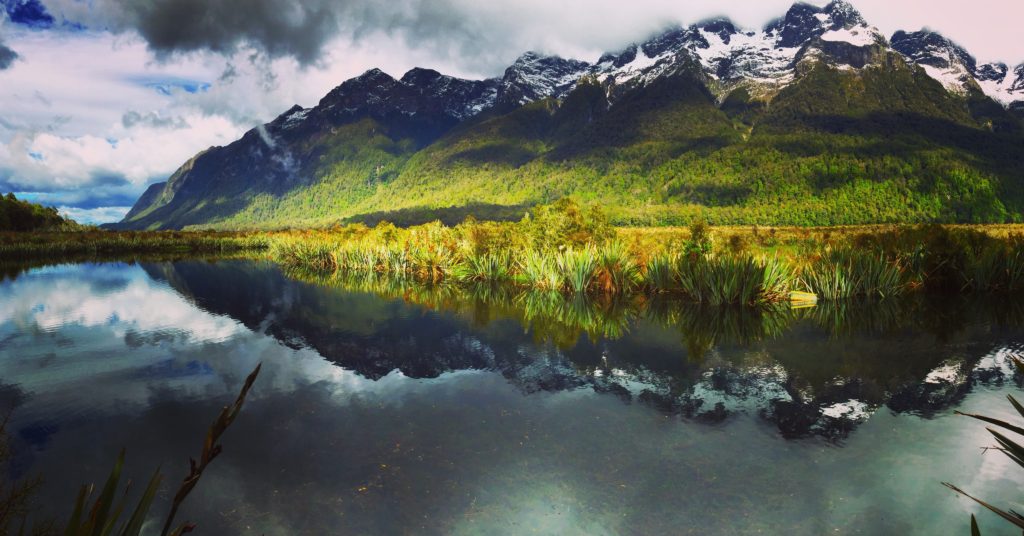Ever hear of the Tröllaskagi Peninsula? Most likely not.
I can’t imagine the name Tröllaskagi rolling off the tongue of anyone planning a trip to Iceland. Terms people associate with Iceland — the Blue Lagoon, Reykjavik, maybe Gullfoss.
Wonderful places, all? Sure. Totally overrun with tourists? No doubt.
Even the most basic trip planning reveals the sheer number of visitors in Iceland these days. I quickly became dismayed at the thought of large tour groups parading around waterfalls and camper vans crowding me out at secluded black sand beaches.
Selfish traveler, I know.
I was so dead set against hanging around tour buses, selfie snappers and pushy crowds that I decided to sleep during the day and go out at night.
That turned out to be an absolutely brilliant move.
Fast forward about a week and my counterclockwise road trip brought me to a quiet corner of Northern Iceland, to Tröllaskagi, the “Peninsula of the Troll”.
There would be no need for off-hours touring here.
SIGLUFJÖRÐUR
A trip to Iceland naturally focuses on the outdoors, but there are occasional cultural and historical diversions to mix things up a bit.
One such highlight on the Tröllaskagi Peninsula is the Herring Era Museum in Siglufjörður.
HERRING ERA MUSEUM
A reconstituted processing factory houses the museum, which is bursting with original equipment and tools. Period photos lovingly re-create the heyday of Icelandic fishing. Exhibits stretch across three colorful buildings, the last full of actual fishing vessels.
I learned that herring once accounted for an astounding 31% of Iceland’s GDP. During the fishing boom in the first half of the 20th century, the area around Siglufjörður acquired a nickname — the “Atlantic Klondike”.
The boom times didn’t last, of course. In 1969 the herring simply failed to show up. Overfishing had killed the golden goose. The former fishing powerhouse declined into today’s sleepy tourist town of 1,300 in the far north.
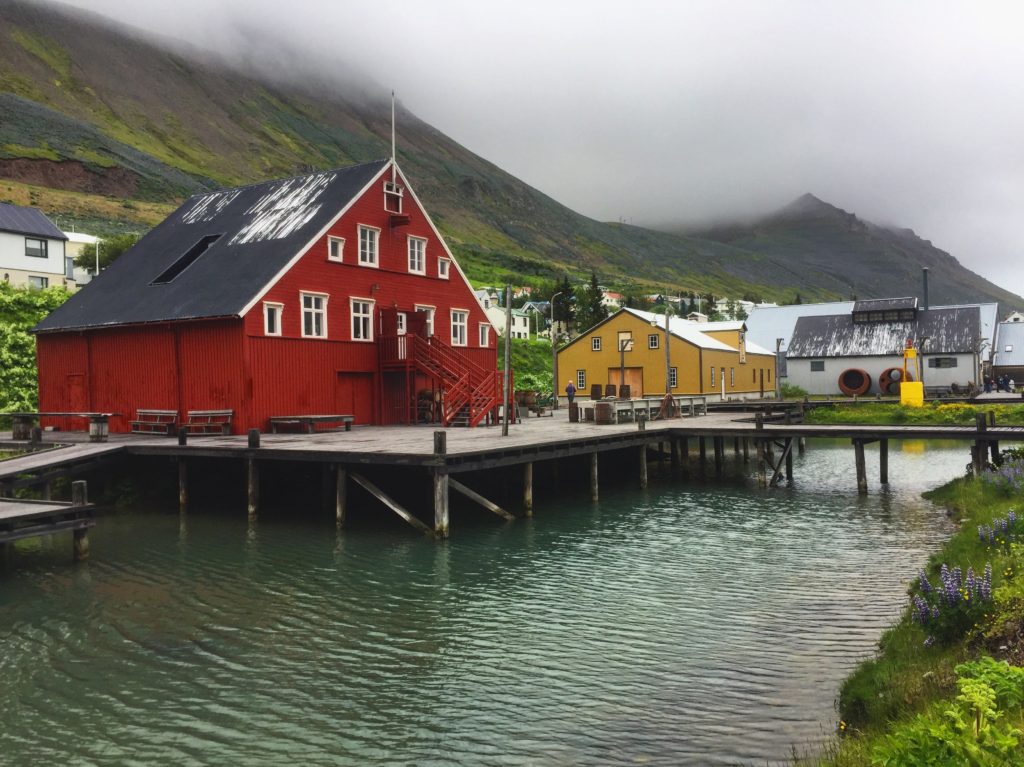
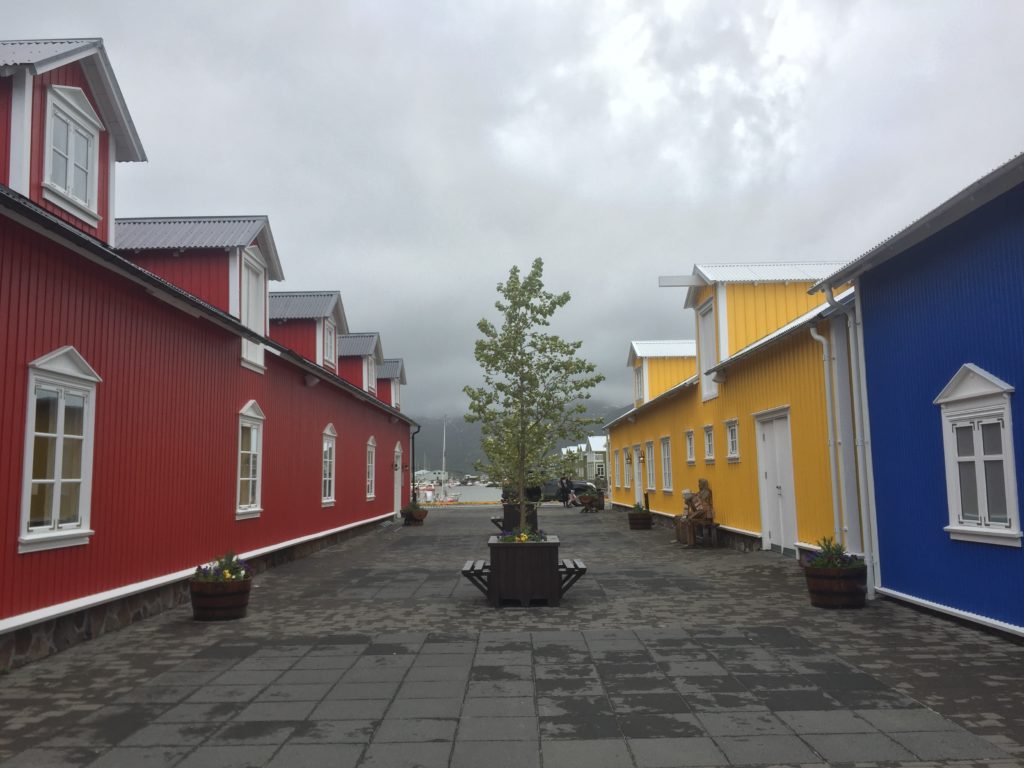
I walked Siglufjörður’s quiet streets on a rainy, mid-week afternoon and found the town itself had a contented air to it. Residents decorated front porches with hanging baskets. Buildings sported fresh coats of paint. The relatively few faces out and about were welcoming. Even the wooden boardwalks had a certain beauty to them. The rain dampened the wood, deepening its tone. Droplets of water sagged and fell from the railings.
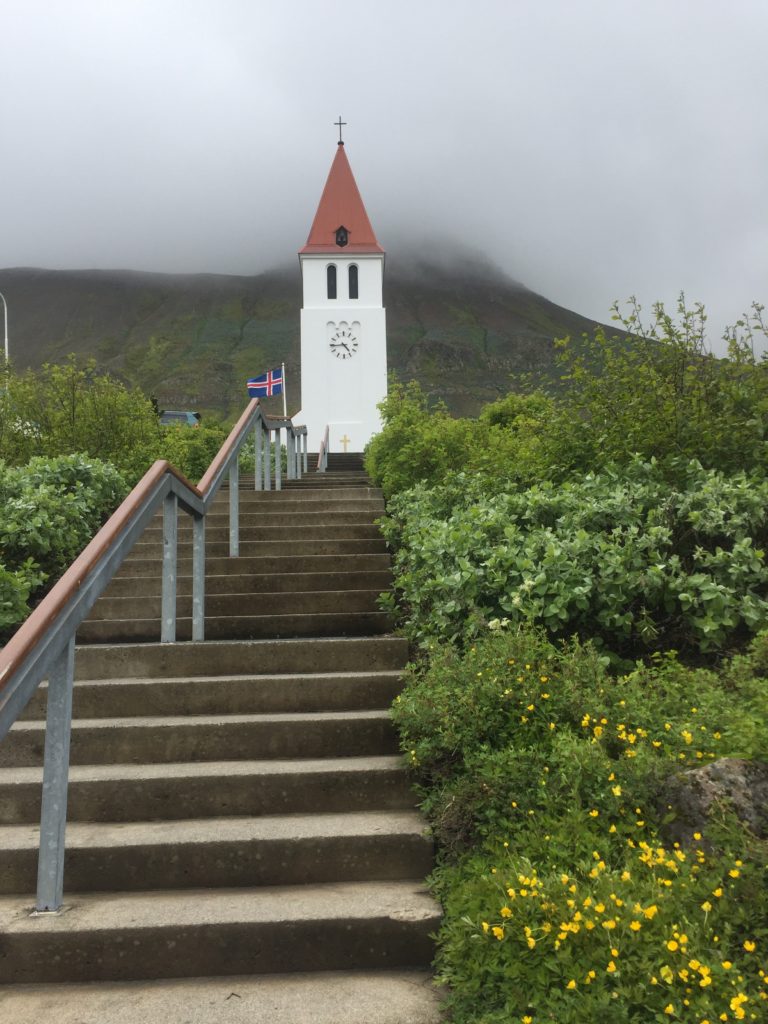

THE FOLK MUSIC CENTER
The Herring Museum ticket included admission to The Folk Music Center across town. I’m always on the lookout for music, so I didn’t require much convincing.
The friendly museum curator met me on the porch and invited me in to the small repurposed home deep in Siglufjörður’s residential back streets.
After a browse he demonstrated traditional Icelandic stringed instruments like the fidla and the autoharp. I asked about traditional music in Reykjavik and he did his best to point me in the proper direction.
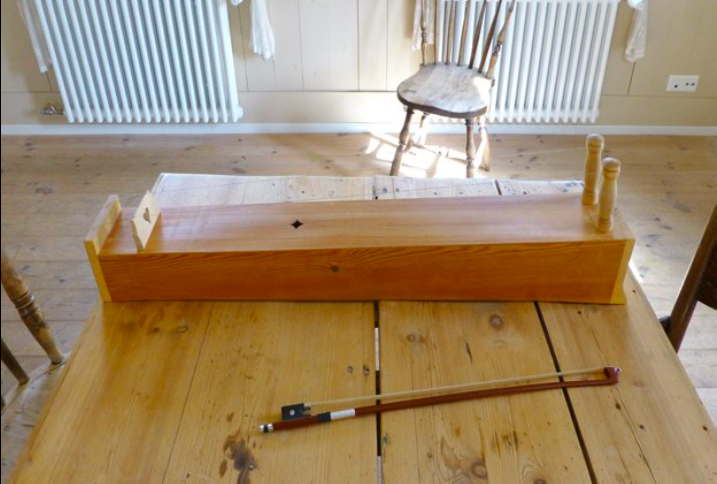
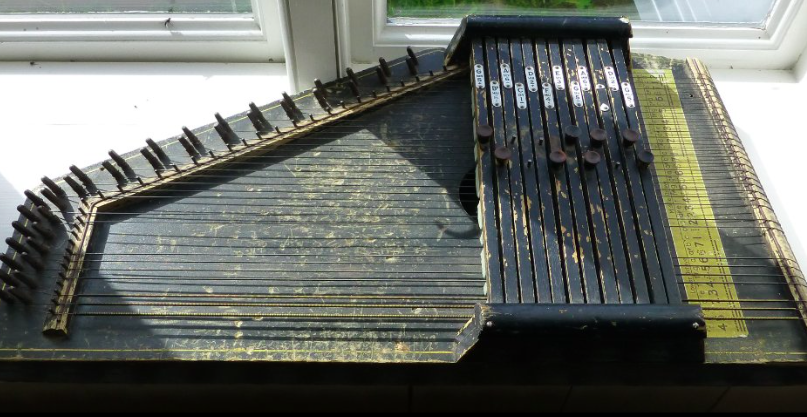
Not traditional music, but Icelandic and beautiful nonetheless — Sigur Ros ‘Untitled 3’
I liked Siglufjörður.
But I had an evening date to keep. And it was halfway down the western side of the peninsula.
Seven miles worth of single-lane mountain tunnels cut through the upper end of the peninsula. But traffic flows both directions. I kept an eye out for headlights and used the occasional pull outs to make it work. Southbound traffic has priority.
Check out my drive through single-lane mountain tunnels
Back in the day a trip between the small north coast communities of Ólafsfjördur and Siglufjörður required a 62km one-way drive over a scary mountain road. The 2010 inauguration of these tunnels cut 45km from the trip and ensured safe year-round access.
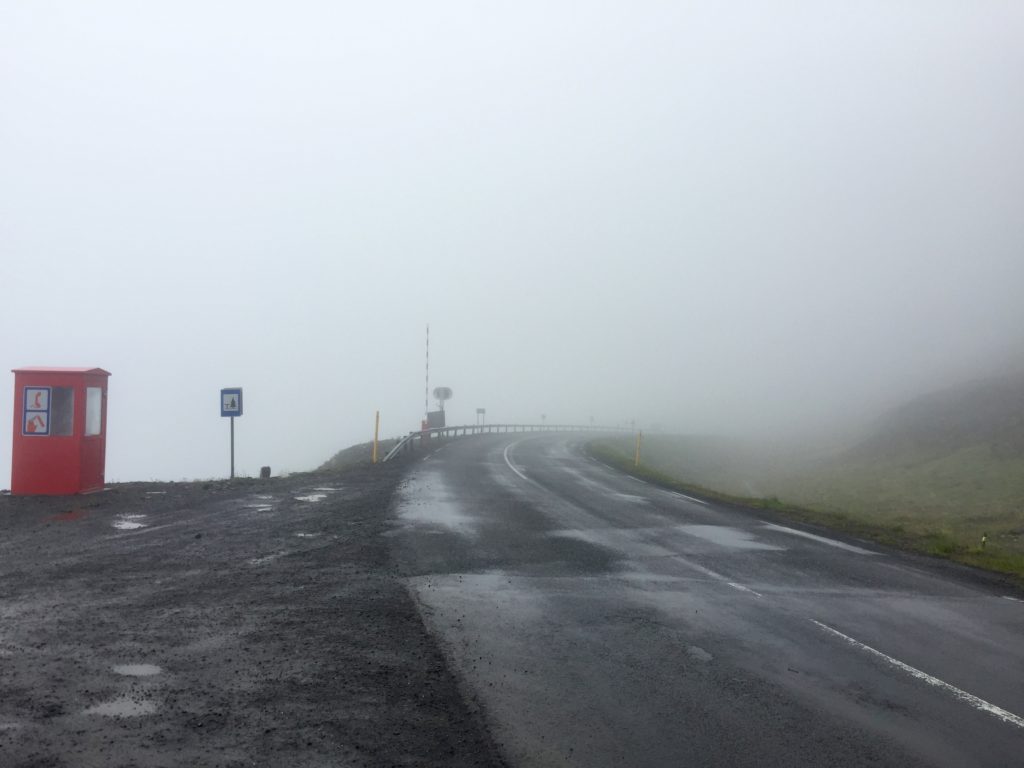
Coming out of the final tunnel on the western side of the peninsula the weather totally changed; the sun shone brilliantly, the Greenland Sea glistened and glimmered.
I was in the Iceland of every traveler’s dreams.
HOFSÓS
I rolled in to Hofsós early in the evening, just in time to pop round the local pool for a dip. Hofsós has a population of just 180, but like every town in Iceland seems to have its own pool. Community pools are a way of life in Iceland and visitors are always welcome.
This pool, though, is unlike any other. It was built into the side of a cliff overlooking Skagafjörður. The architect who designed the Blue Lagoon is also responsible for this award-winning pool. And he built it in virtual infinity style.
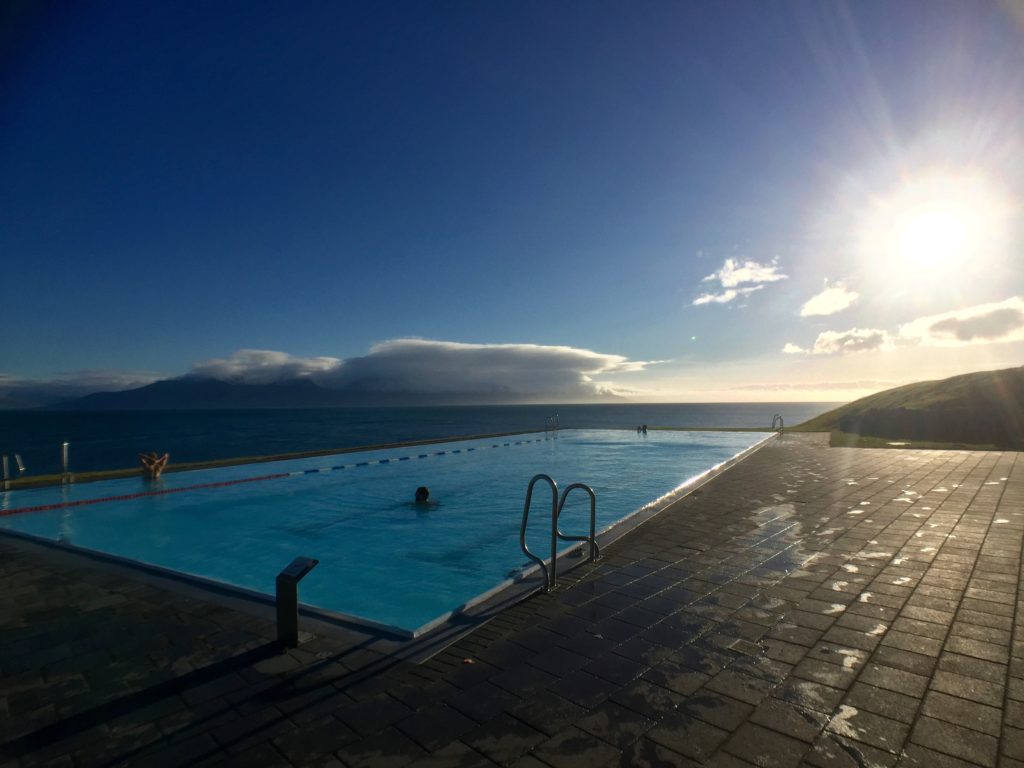
Hop in and it looks like you’re about to swim off the edge of Hofsós. It is the single most amazing pool I have ever seen.
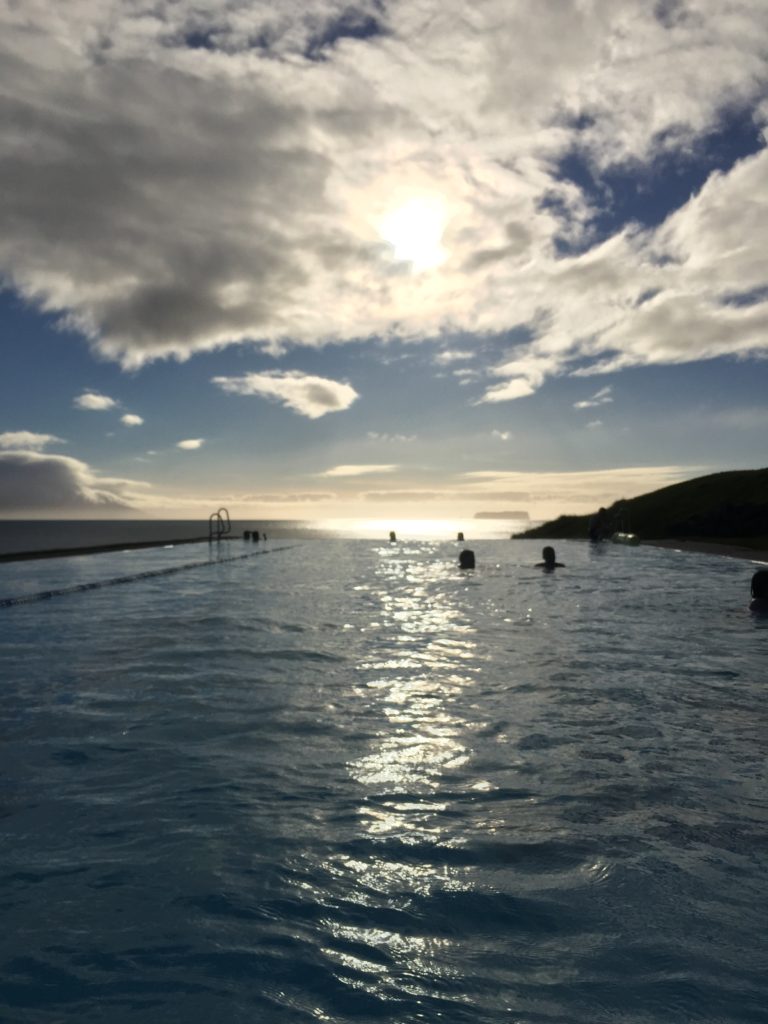
A handful of lucky tourists mixed with a few local kids and their parents. We took turns using the bubbling hot-pot behind the pool and enjoyed the spectacular views on an absolutely perfect midsummer evening.
On my way out I took note of the message board in the entryway. Of course it was all in Icelandic, but the following day’s date stood out. I deciphered the words ‘cello’ and ‘concert’. That was enough for me.
I planned to stop by the old bishopric down the Tröllaskagi coast in Hólar anyway, but the 4pm concert meant I could enjoy the Icelandic Emigration Center before leaving Hofsós.
Get caught up on my off-hours road trip through the most popular spots in Iceland
ICELANDIC EMIGRATION CENTER
I met Donna and Matthew the following morning when they arrived to open up the series of clapboard buildings which constituted the Emigration Center.
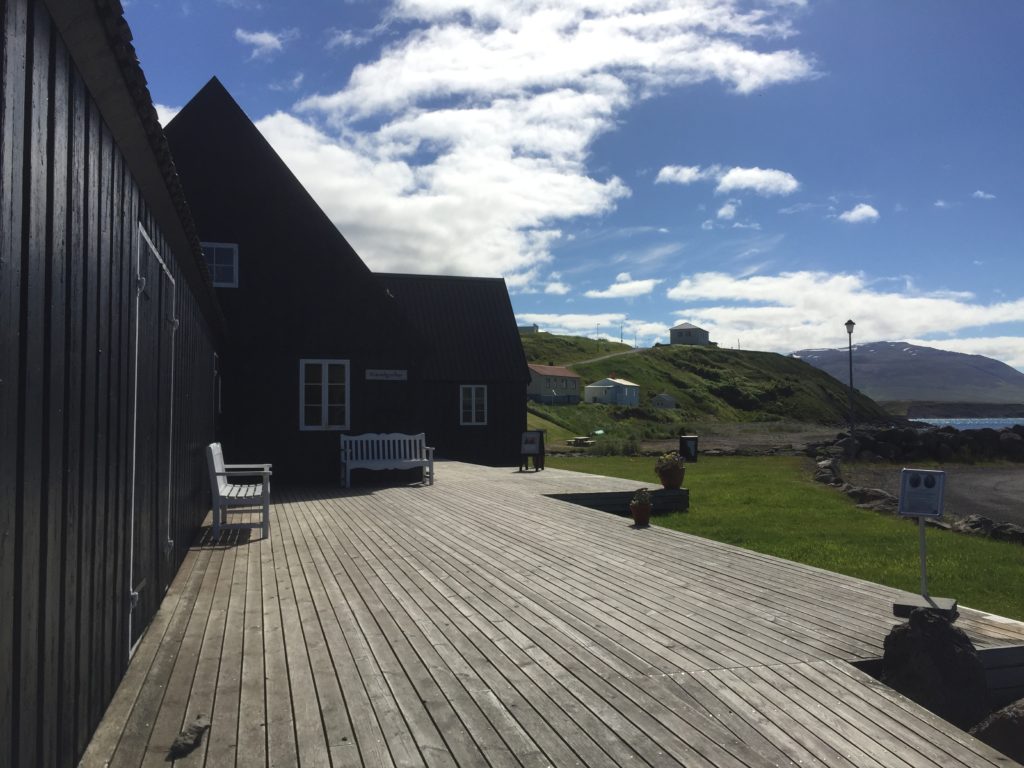
Stationed here on summer genealogical internships, they obviously had a keen interest in their Icelandic heritage. Both just started, but were already laughing at the remoteness and lack of, say, a proper grocery store in the area. That the one in Hofsós shares space with the local gas station says it all.
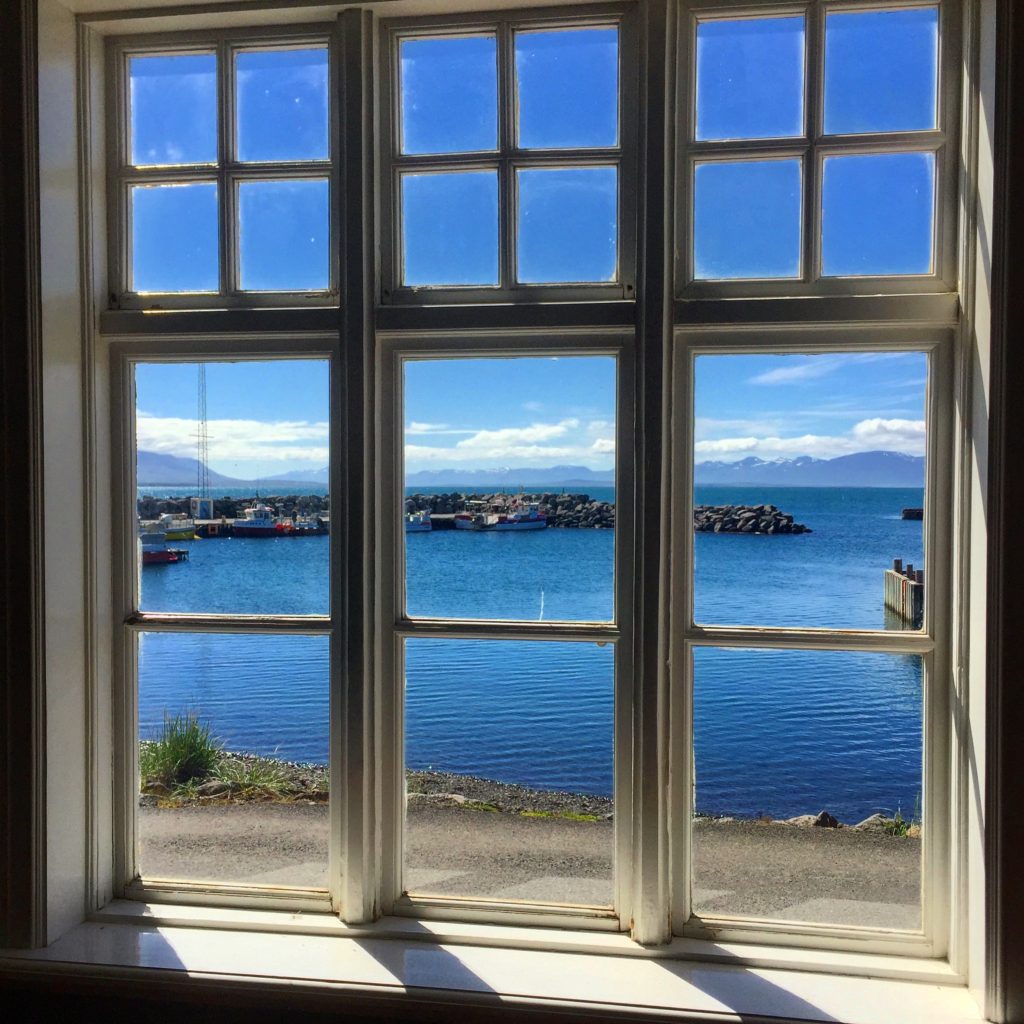
Twenty percent of Icelanders emigrated to North America from the latter part of the 19th century. At the time 1/5th of the population was only 16,000 people, but that is one particularly impressive rate of departure.
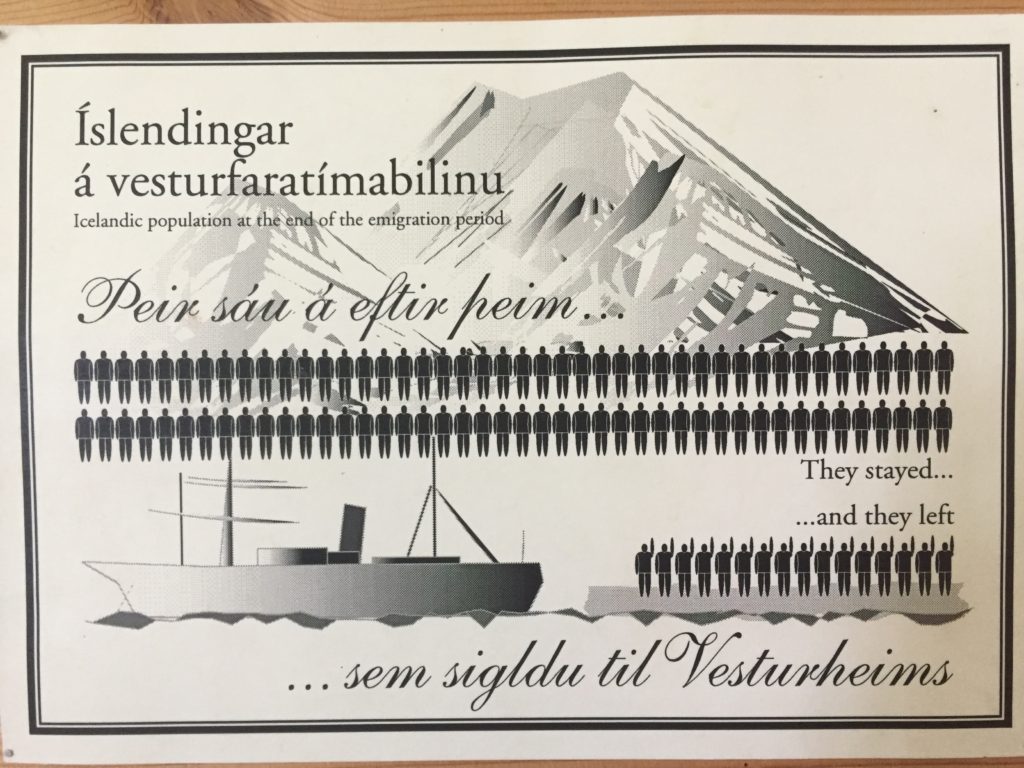
Just like the Herring Era Museum, the Emigration Center did a wonderful job of bringing to life the people and stories behind potentially dry topics. Photos, documents, personal histories, detailed records, log books — this place had it all. Add in the passion of folks like Donna and Matthew and the Icelandic Emigration Center was a surprising highlight of my time in Northern Iceland.
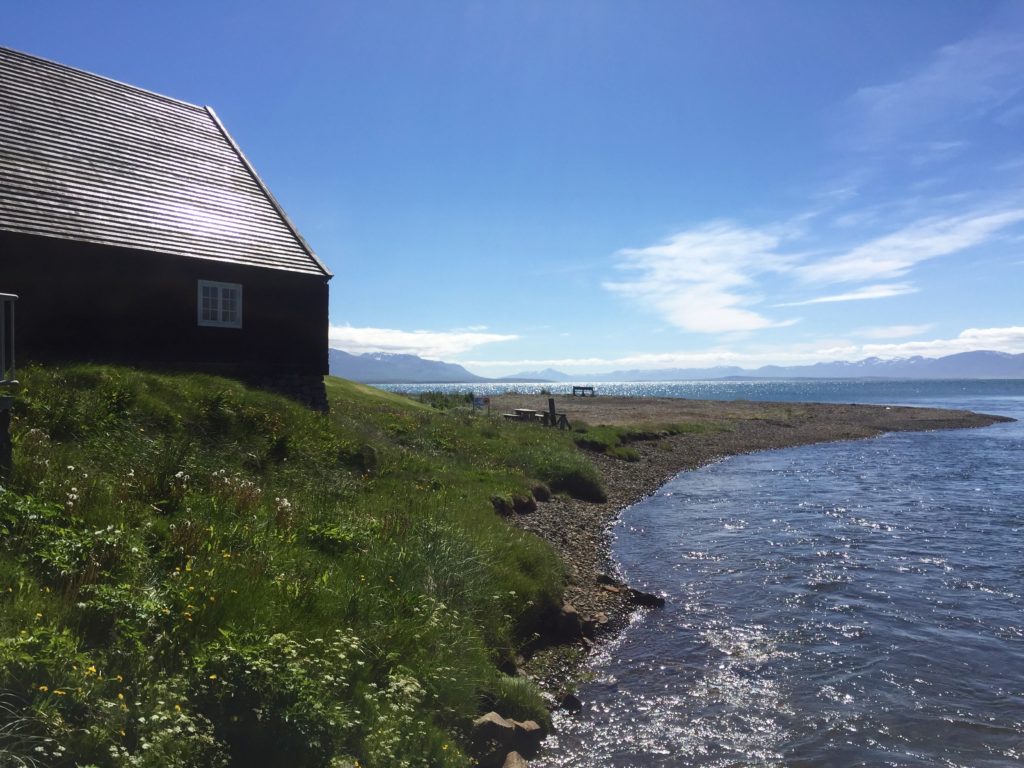
My new intern friends were exceedingly generous with their time and expertise. They were genuinely nice people too. I decided to gift them some of the foodstuffs I brought from home and didn’t plan to use on my self-catering road trip.
I felt like a mariner re-supplying a far-flung outpost full of folks yearning for a taste of home. Honey packets, tea bags, spices, granola bars and brown rice never went over so well.
HÓLAR
At the National Assembly in the year 1000 the law speaker made a decision on Iceland’s religion. Under pressure from the Norwegian king, he declared Iceland a Christian nation. Most of the populace gave up their pagan beliefs and Norse gods and converted to the new faith.
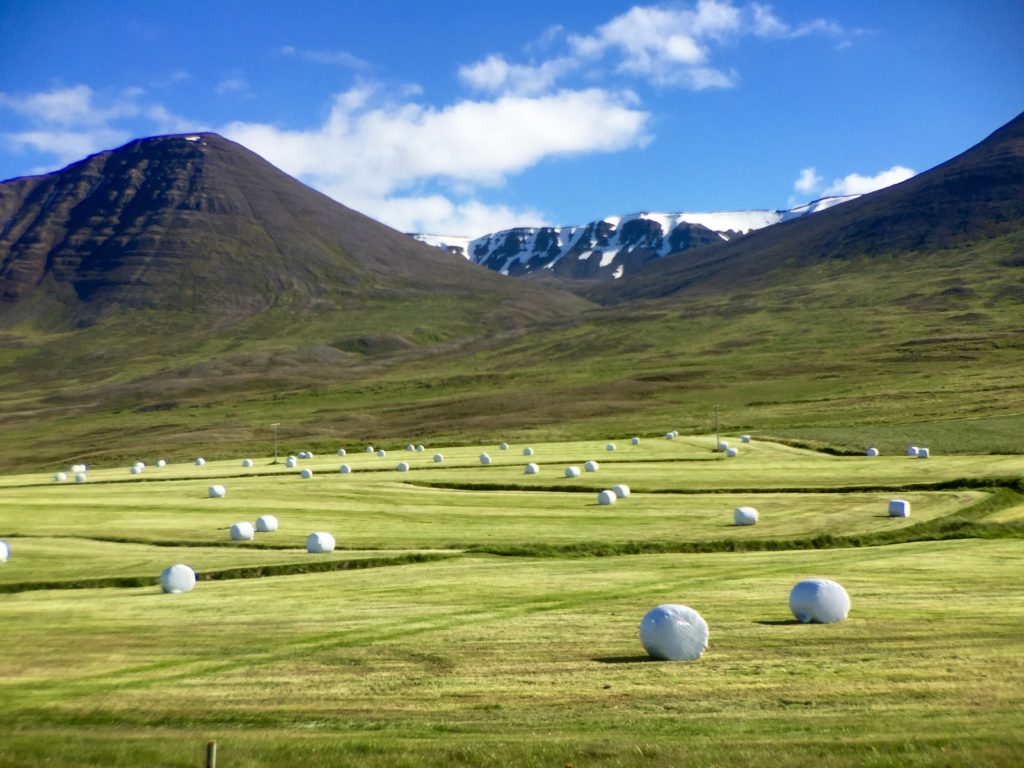
Within 50 years of that change, a church was constructed in a scenic valley of north Iceland. A succession of houses of worship followed over the years. Today, Iceland’s oldest stone church stands as the modern successor in that scenic valley. It also happened to be the venue for our Sunday concert.
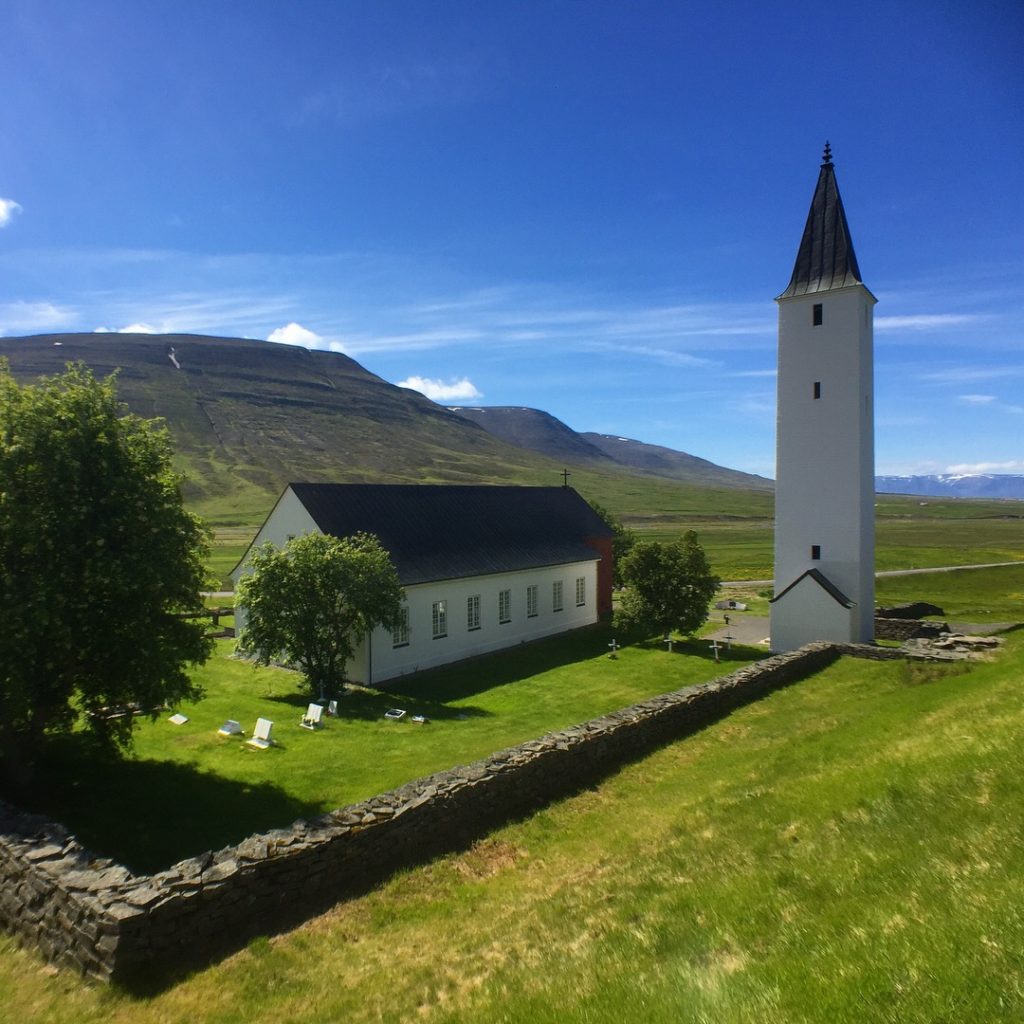
Twenty or so locals in their Sunday best filed in. Pretty good turnout. Fewer than one hundred people live in Hólar. Obviously everyone knew one another.
I felt extremely lucky to be in attendance.
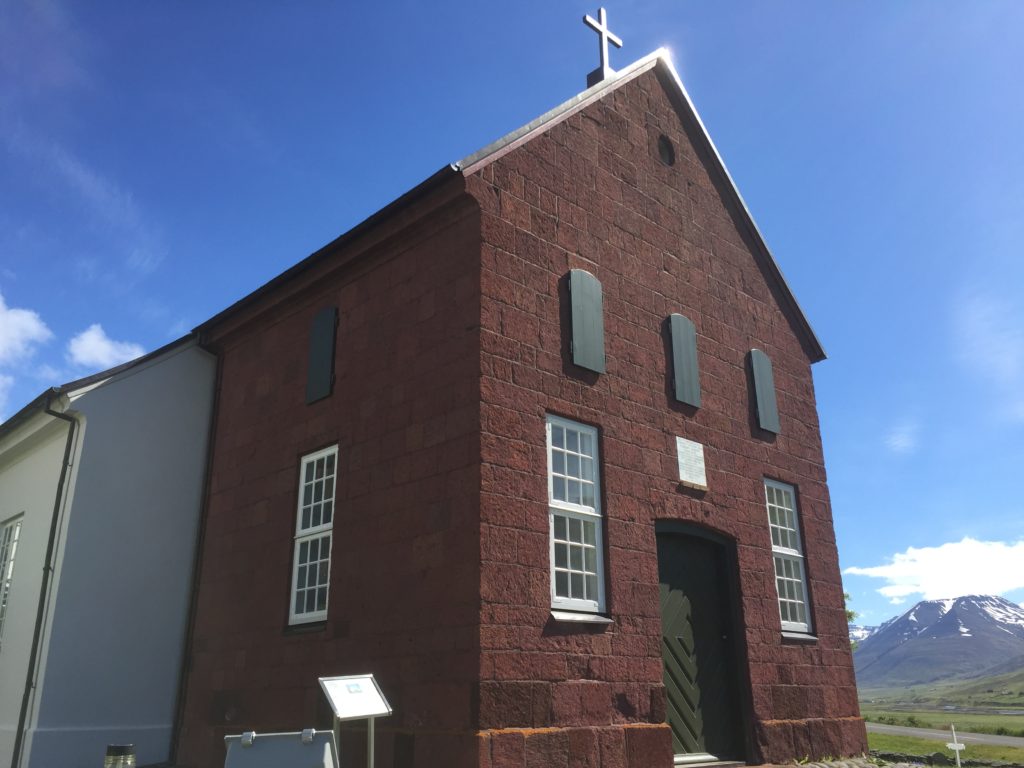
Until the Protestant Reformation came to town in the 1500’s, Hólar was one of two main ecumenical and educational centers in all of Iceland.
But, as in continental Europe, times were changing.
The last Catholic Bishop of Hólar, Jón Arason, didn’t care for the direction Iceland appeared to be heading. He strongly resisted Reformation and turned to violence. For a time Arason maintained the upper hand against Iceland’s Danish overlords.
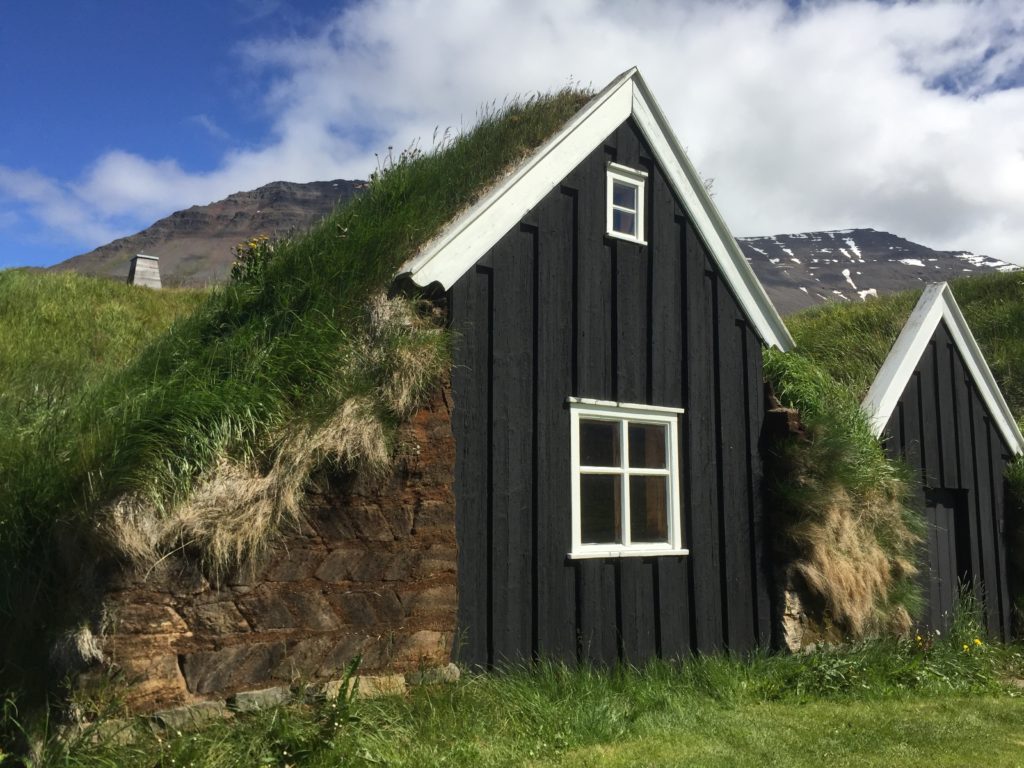
The battle for the religious future of Iceland remained undecided until the year 1550 when forces loyal to the Danes captured Arason and his two sons. There was no trial. Their beheadings took place on the seventh of November.
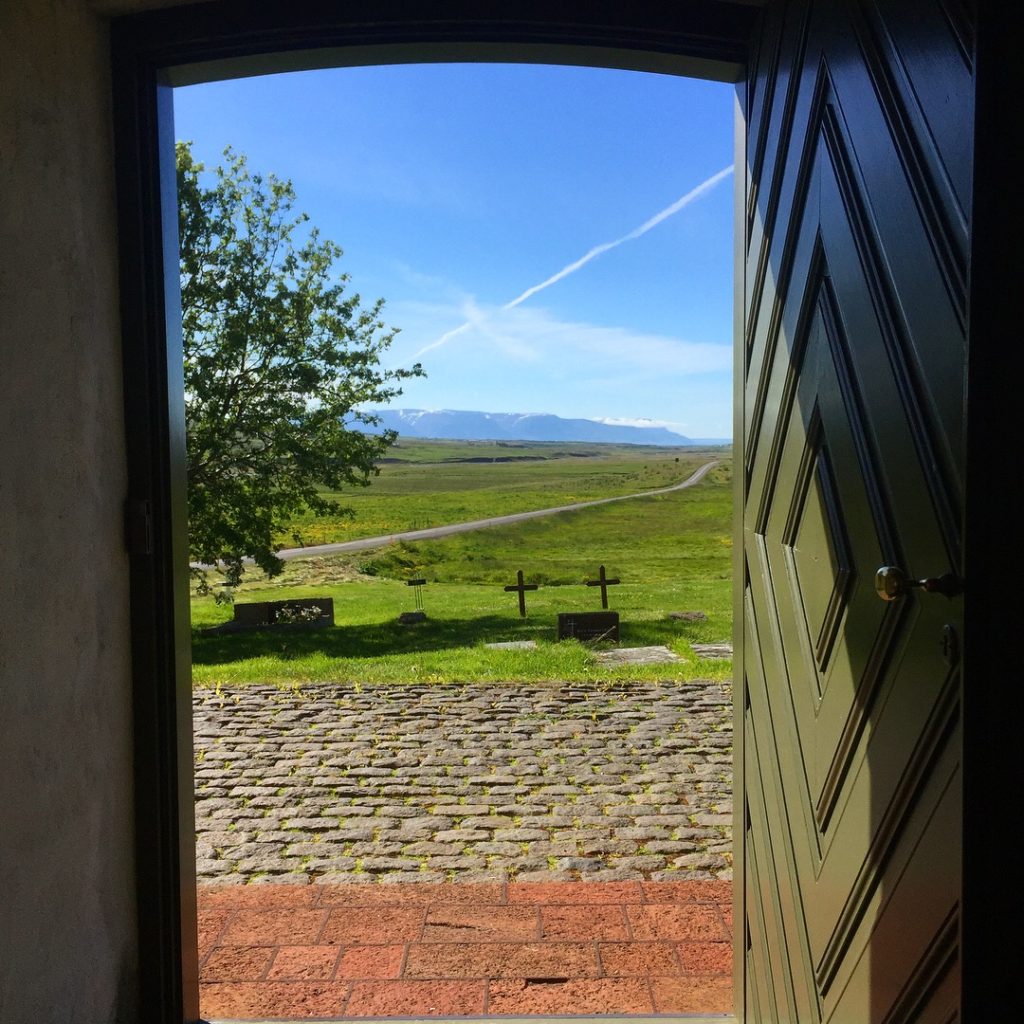
Authorities subsequently outlawed Catholicism.
It would be three hundred years before another Catholic priest set foot in Iceland.
DO IT YOURSELF
Getting There
Tröllaskagi is a good 5-hour drive from Reykjavik, however Iceland’s second city of Akureyri is right around the corner — between 30 and 90 minutes by car. The exact times depend on your destination, naturally. Use Google maps and add twenty-five percent.
If you aren’t driving around the whole island, flights into Akureyri (AEY) are common. The airport offers rental cars from several of the big international names.
Getting Around
In theory you could visit some of the places I mentioned by bus, but it wouldn’t be easy. Iceland by Bus runs a hop-on hop-off service around the island during the summer.
In reality, a rental car or camper van is the way to explore these less touristed corners of Iceland.
Camper vans are a great combination of car and bed. Rent.is, Happy Campers, Go Campers and KuKu Campers are all reputable agencies with a variety of vehicles. Advance bookings — up to a year in advance (don’t laugh) — are absolutely necessary. If you can’t operate a manual transmission, your options will be even fewer. Don’t leave it late!
Sleeping
I slept in my Volkswagen Caddy camper van, but Tröllaskagi has some reasonable accommodation options. Reasonable in this case does not necessarily mean reasonably priced! You’re in the land of US$75 hostel beds, booked out hotels and extremely high living costs.
I can recommend the campground in Hofsós; a quiet field of grass in the center of town, clean facilities and a friendly caretaker. Can’t ask for much more. Open only in summer. 14.000 krona or just under US$14/night.
Eating
The dining scene is Tröllaskagi is surprisingly varied. How about an authentic Moroccan tagine in Siglufjörður? Perhaps traditional cod or herring in Hófsos?
For self-caterers, each town has a modest grocery store. Unless you count Olís petrol stations, Samkaup urval is the main shopping option during your Tröllaskagi road trip. Best bet is to do your main purchasing elsewhere and use these smaller shops for an occasional supplement.
Seeing the Sights
Siglufjörður
The Herring Era Museum is open June, July and August, 10:00-18:00; May and September, 13:00-17:00; rest of the year by appointment only. Admission 1.800 krona for adults, 1.000 for seniors.
The Folk Music Center is open June through August, 12:00-18:00 and by appointment the remainder of the year. Admission is included with your Herring Era Museum ticket.
Hofsós
The pool hours — June through August 9:00-21:00 daily, rest of the year 17:00-20:00 Monday to Friday and 11:00-15:00 Saturday and Sunday. Entry 900 krona.
The Icelandic Emigration Center is open 11:00-18:00 between June 1st and September 1st and by appointment the rest of the year. Admission 1.700 krona.
Hólar
The Cathedral has a great website. For you non-Icelandic speakers, here is the translated version. In short, concerts are held each Sunday from mid-June through mid-August at 16:00. Free admission.
